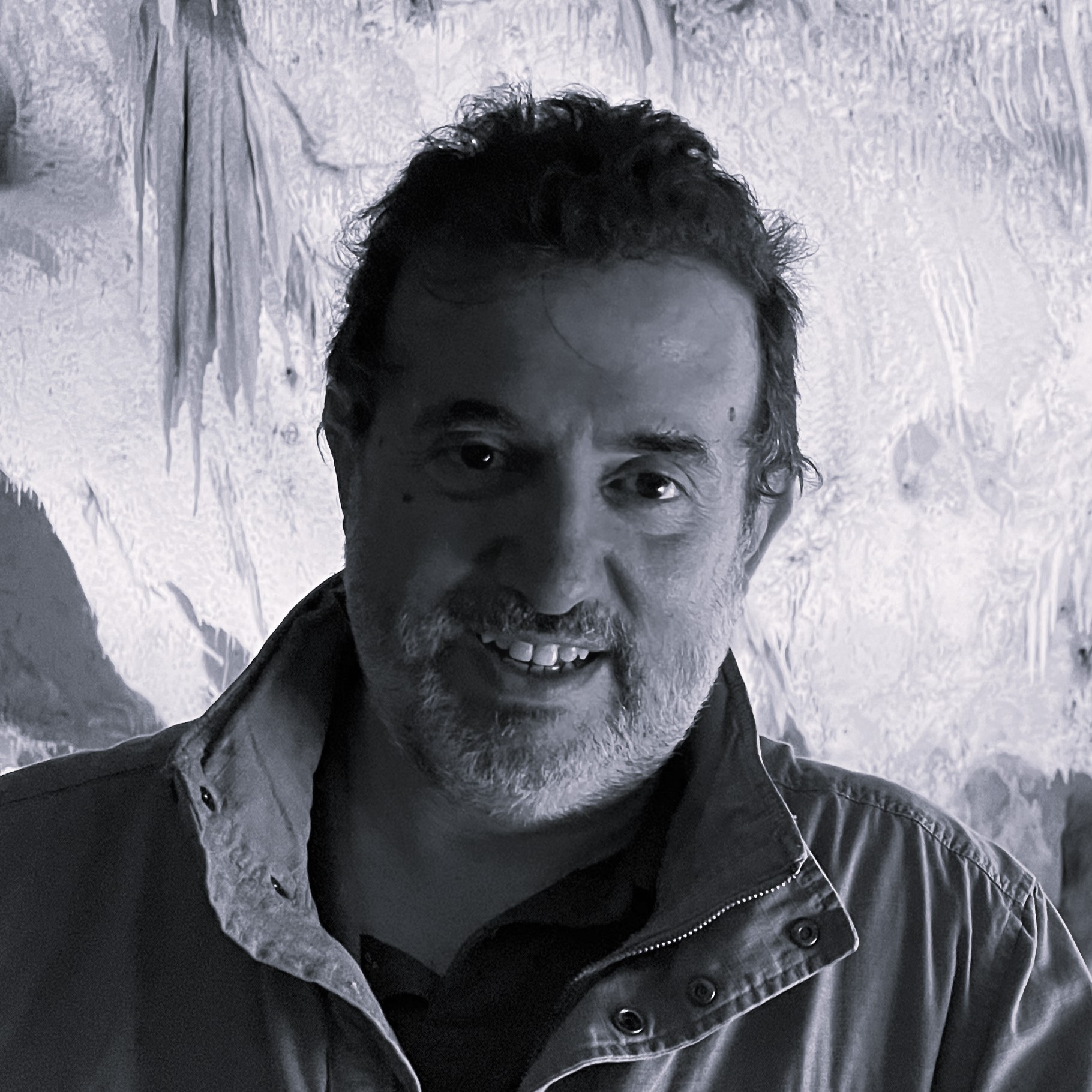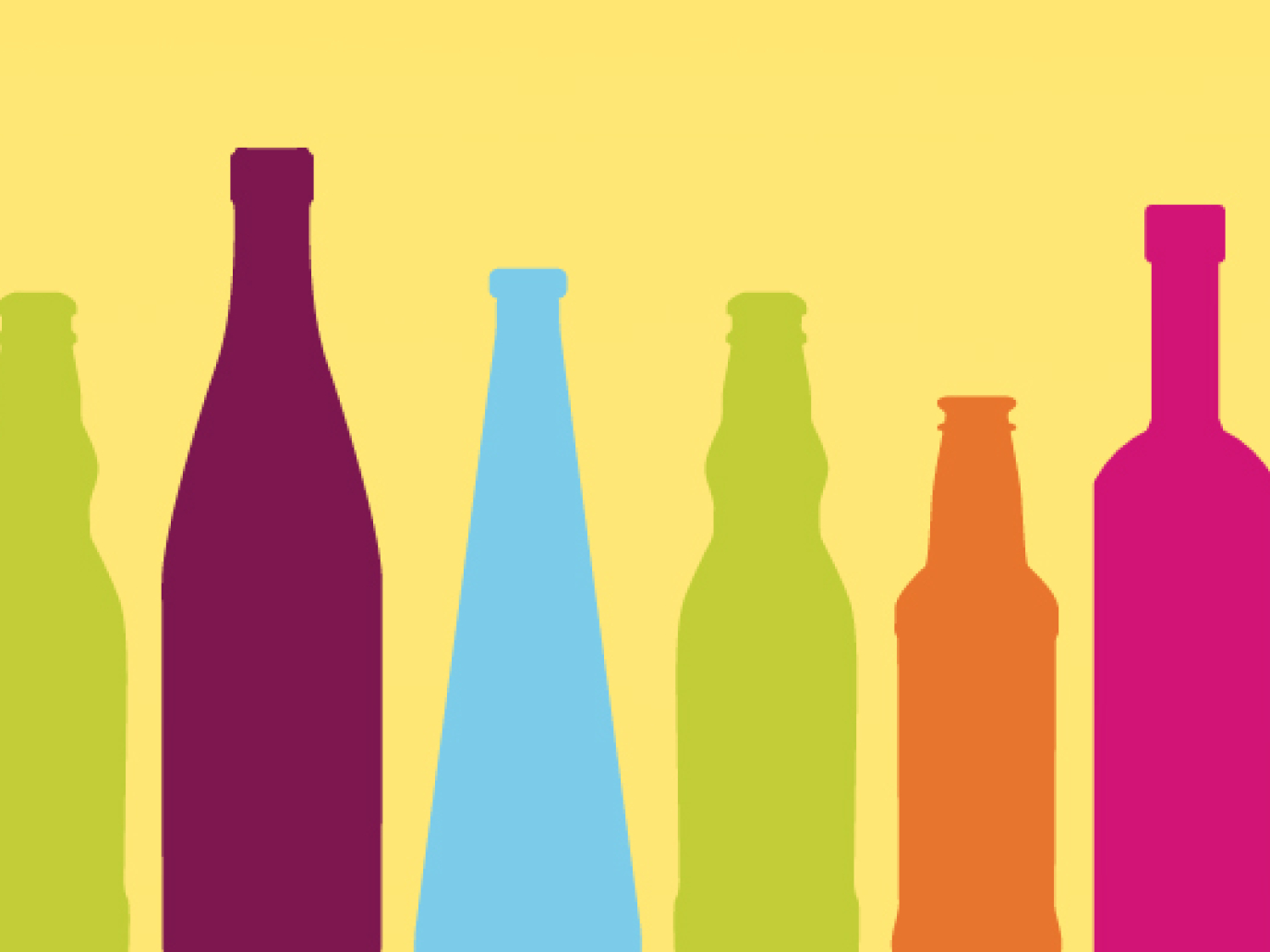While the traditional economy struggles to go on and sometimes it stops, glass keeps on rolling, making the wheels of economy spinning. These are not just mere words but an accurate snapshot of the glass packaging industry in Italy and Europe.
A few numbers are enough to understand that it is a healthy sector. According to the recent report Glass Recycling and the New European Targets for the Circular Economy, made by Foundation for Sustainable Development for Assovetro, (Italian Glass Association) glass recycling is a vital sector for the Italian economy: 20,200 employees, 1.4 billion of GDP with 70% of green investments.
If we look beyond the national boundaries, glass production and recycling in Europe have generated 125,000 jobs – totalling €9.5 billion of European GDP – reducing by 48% the use of raw materials. In plain English, an excellent example of circular economy.
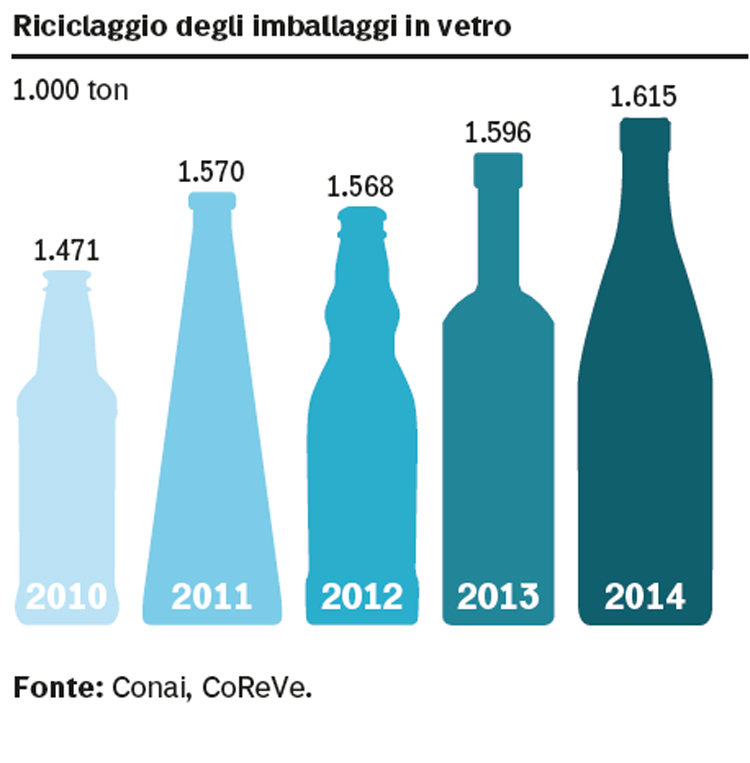
“From one kilo of glass cullet – the report reads – a kilo of glass is produced, if on the other hand, raw materials are used (sand, soda, lime, dolomite and feldspar) it is necessary an input of about 1,17 kilos. Glass recycling curbs natural resource consumption, cuts the damaging effects from mining and reduces energy consumption, thus containing greenhouse gas emissions deriving from the production process. All the glass cullet used by glassmakers in 2014 alone (including secondary raw materials from independent or agreed management, flat glass industry and cullet from rejects) reduced the use of traditional raw materials by 3,020,000 tonnes.”
In Italy, glass separate waste collection is on the rise – it has now reached 77% – and also the recycled quantity, in defiance of – so to speak – the economic crisis that certainly did not encourage the number of bottles and jars on the Italian market. Over the last five years taken into consideration by the research – from 2010 to 2015 – recycling went from 68.3% to 70.3%. It is only two percentage points, which meant a wider availability of renewable matter for the production of new glass containers.
Also, from an energy point of view, the 3,020,000 tonnes of unused raw materials meant savings of as much as 316 million cubic metres of methane and fewer emissions of about 1,9 million tonnes of CO2.
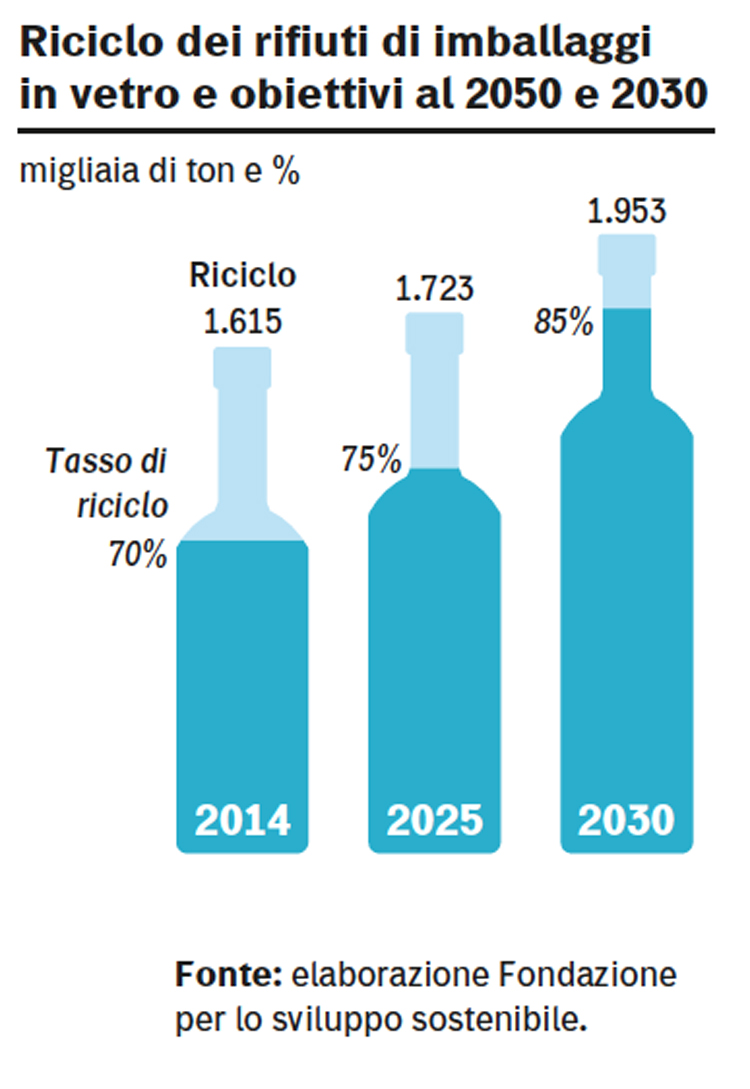
“Glass – Marco Ravasi explains, Chairman of Assovetro’s hollow glass section – is a material that fully achieves the concept of circular economy based on the notion of produce-consume-reproduce, allowing to have containers with the same characteristics of the original ones. Following the new European targets, it will be necessary to improve and increase separate waste collection and strengthen innovation in the sector in order to obtain quality cullet feeding a virtuous cycle.”
Given the recycling targets envisaged in the recent EU package on the circular economy with a percentage of 75% by 2025 and 85% by 2030, the warning from Assovetro is that we have to do more. Today, it is still estimated that 512,800 tonnes of glass end up in mixed waste, let alone losses recorded in the glass cullet selection and treatment processes. Here, at least 150,000 tonnes of waste – 90% of which being glass – end in landfills due to poor quality during collection. We need to do more. In what terms, though?
To meet the glass packaging recycling targets compared to the glass waste produced, national glass packaging recycling – the level of consumption being equal – will have to reach 1,725,000 tonnes in 2025 and 1,953,000 tonnes by 2030 respectively. This means, in terms of pro capita recycling, 28.4 kg/inhabitant for the first deadline and 32.2 kg/inhabitant for the second. This is assuming that the total waste of glass stays the same.
“The effort to meet these targets – the report explains – will differ according to the area in Italy. A greater contribution is required from the South that, in order to reach the 2025 target, will have to catch up with the delays compared to the rest of Italy, increasing by 6.1 kg/inhabitant pro capita recycling achieved in 2014 and by 3.1 kg/inhabitant to meet the 2030 target. Central Italy will have to increase pro capita recycling by 4.2 kg/inhabitant to make 2015 target and by 3.9 kg/inhabitant that of 2030. The North is in a better position. Here people are required to increase by only 1 kg/inhabitant by 2025 and by 4.8 kg/inhabitant by 2030. As for percentages, in the south the recycling rate to meet the 2025 target will have to soar by 20%, 11% in the Centre. The North is more virtuous, having to improve by only two percentage points.”
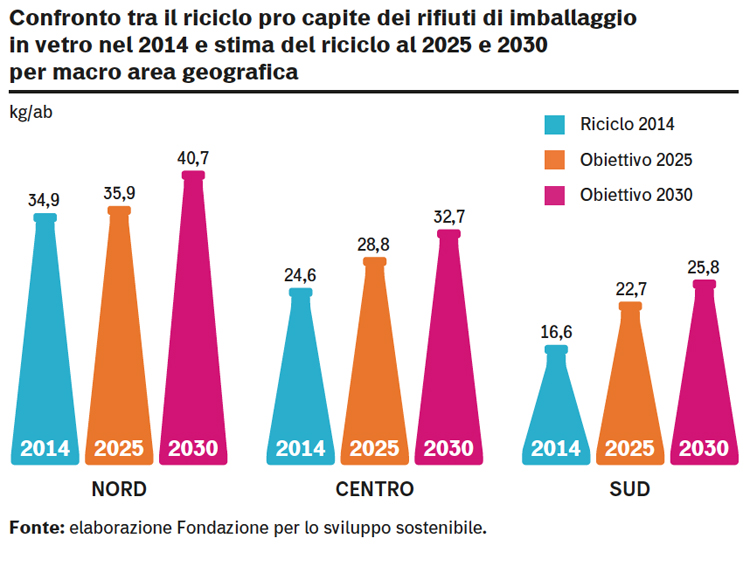
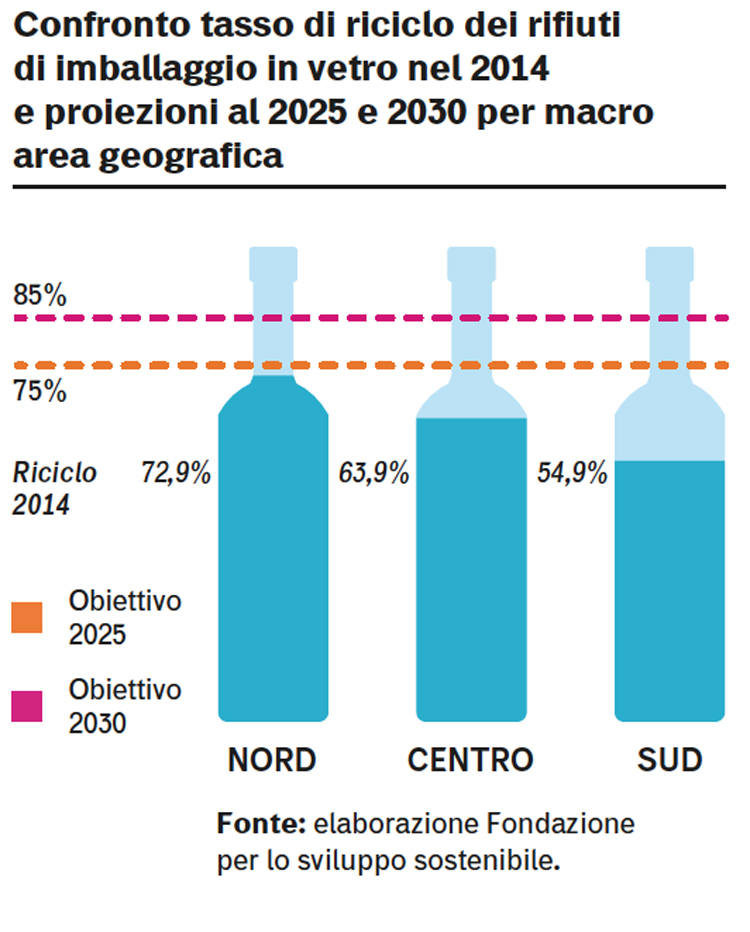
Edo Ronchi – Chairman of the Foundation of Sustainable Development – who supervised the study, glass is thus the ideal model for the European economic future.
“The research shows – Ronchi explains – that glass, which can be recycled many times and reused to obtain the same products, is an inspiring model for the circular economy aiming to reduce the extraction of raw materials from the environment, by minimizing waste production, improving product longevity and their reuse, reintroducing materials into the cycle while maximizing waste recycling and eliminating waste disposal into landfills.”
Info


